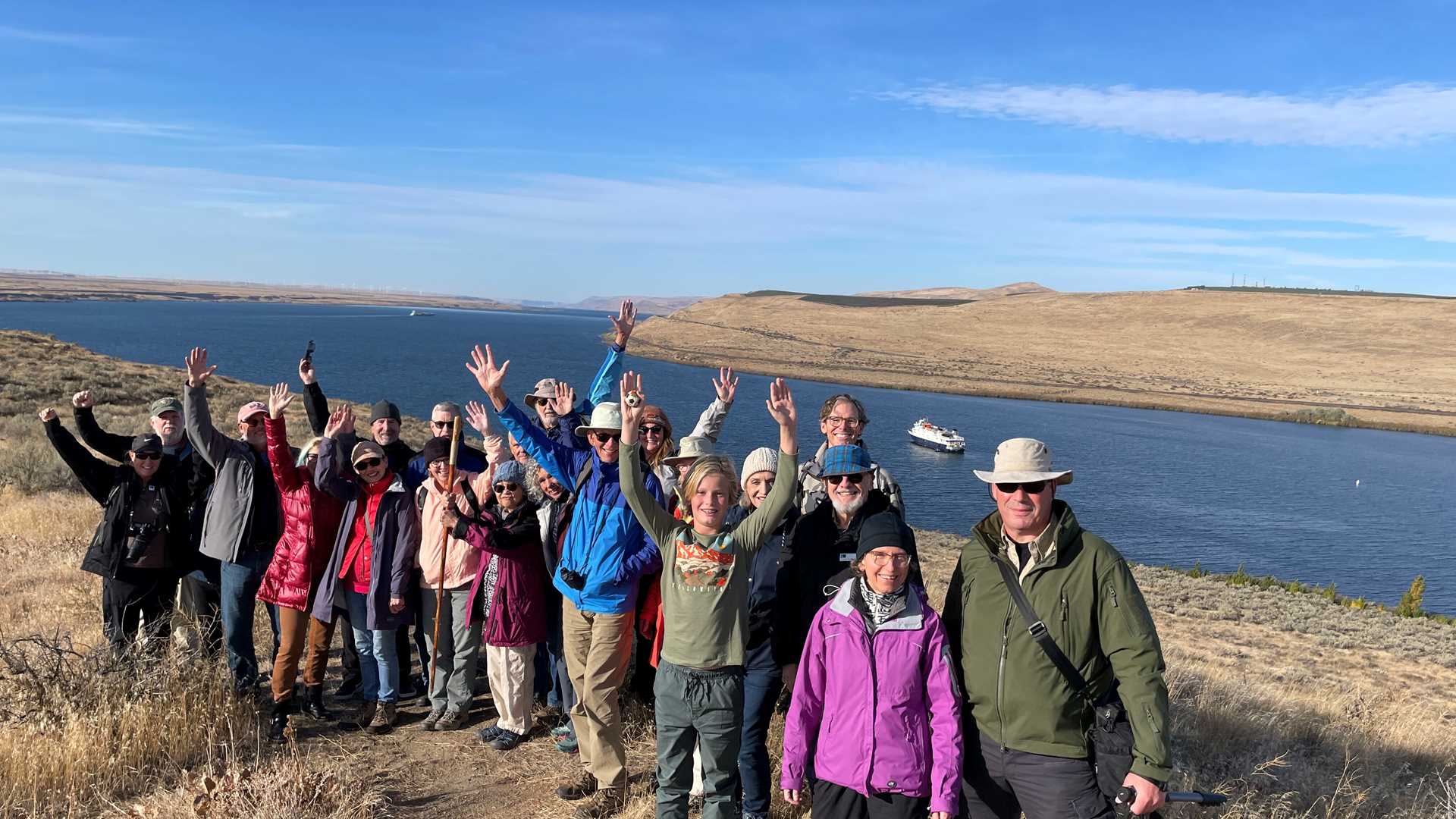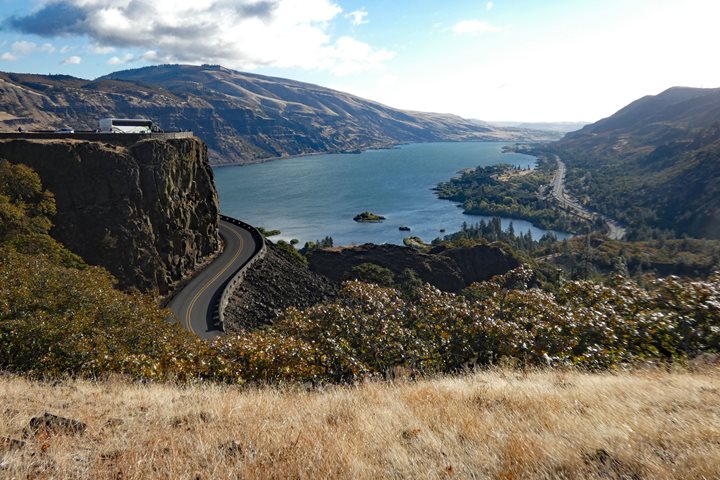National Geographic Sea Bird climbed up the Columbia River. The ship made its way from the temperate rainforest across the deep and narrow basalt cliffs of the Columbia Gorge and into the dry sagebrush-steppe landscape of Crow Butte. The transformation took just a few hours.
As the sun rose across the sharply edged riverine lines, guests sipped coffee and enjoyed breakfast. Afterwards, we enjoyed an expert talk on “Soils and Raptors” by naturalist and “Raptor Extraordinaire,” Zoey Greenberg.
Emerging from Celilo Falls and the Long Narrows, we shuttled upstream to Crow Butte Island. Guests enjoyed aerobic nature walks around the island in the morning.
Returning to National Geographic Sea Bird, guests enjoyed an afternoon of cruising through the Umatilla National Wildlife Refuge and educational presentations on “Salmon, Dams, and the Columbia River Treaty,” by Patrick MacQuarrie, river historian, and “Geology of the Columbia River Basin,” by the multitalented naturalist wizard, Jesse Humbert.
Crow Butte and the refuge offered a plethora of birdlife for the guests’ enjoyment, including grebes, great blue herons, double-crested cormorants, American white pelicans, bald eagles, northern harriers, red-tailed hawks, kestrels, and several types of geese, including snow geese, cackling geese, and Canada geese. We also spotted buffleheads, widgeons, mallards, coots, gulls, and several sparrows.
While naturalists wooed the “Sea Bird Nation” with natural science and history stories, the ship transited McNary Lock. The lock lifted National Geographic Sea Bird up 75-feet into Lake Wallula, eventually passing Wallula Gap and entering the Snake River by dinner.
Once again, National Geographic Sea Bird made the once impossible journey possible. This was first accomplished by Lewis and Clark in 1805 and 1806 on their historic journey to open the West to a young and eager country.
Photographers: Patrick MacQuarrie, River Historian and Naturalist; Dr. Robert Jason, Guest; and Kim Nesbitt, Photo Instructor





